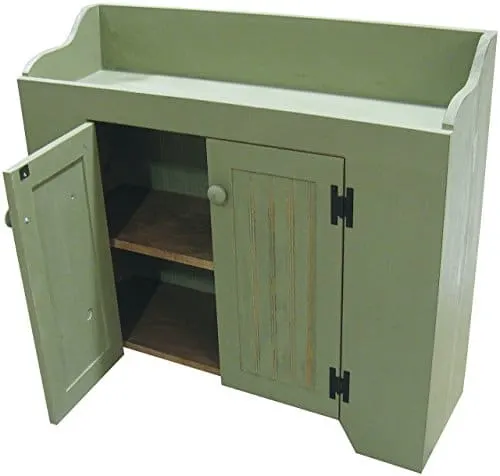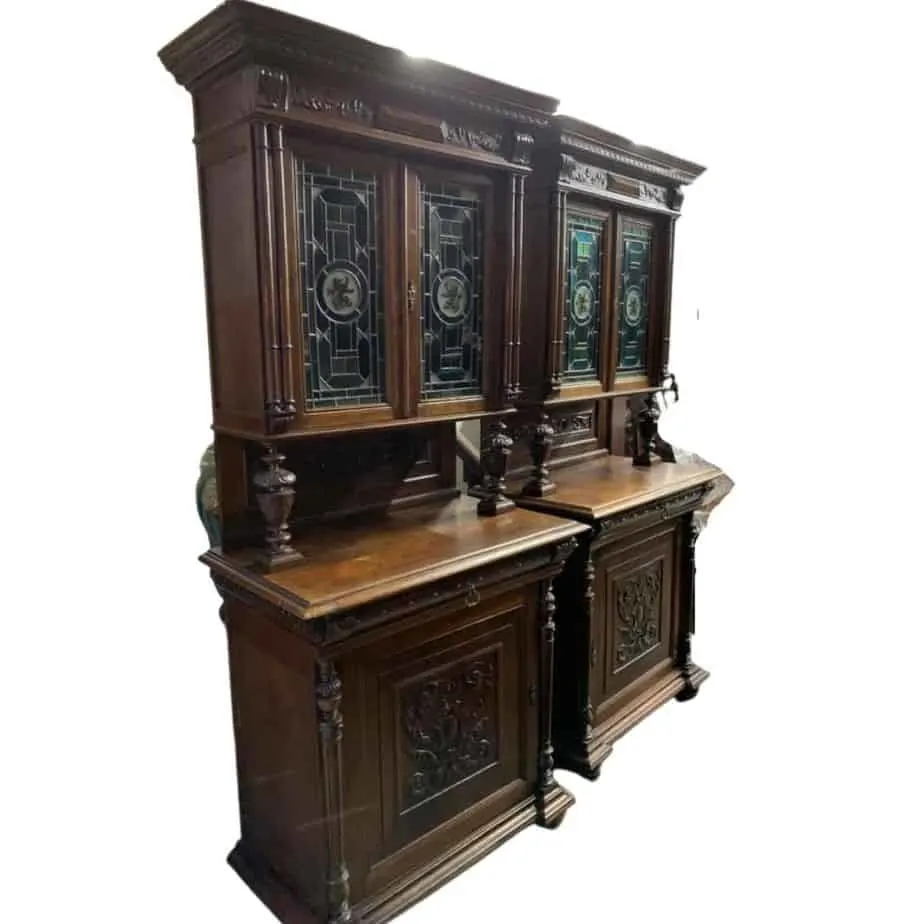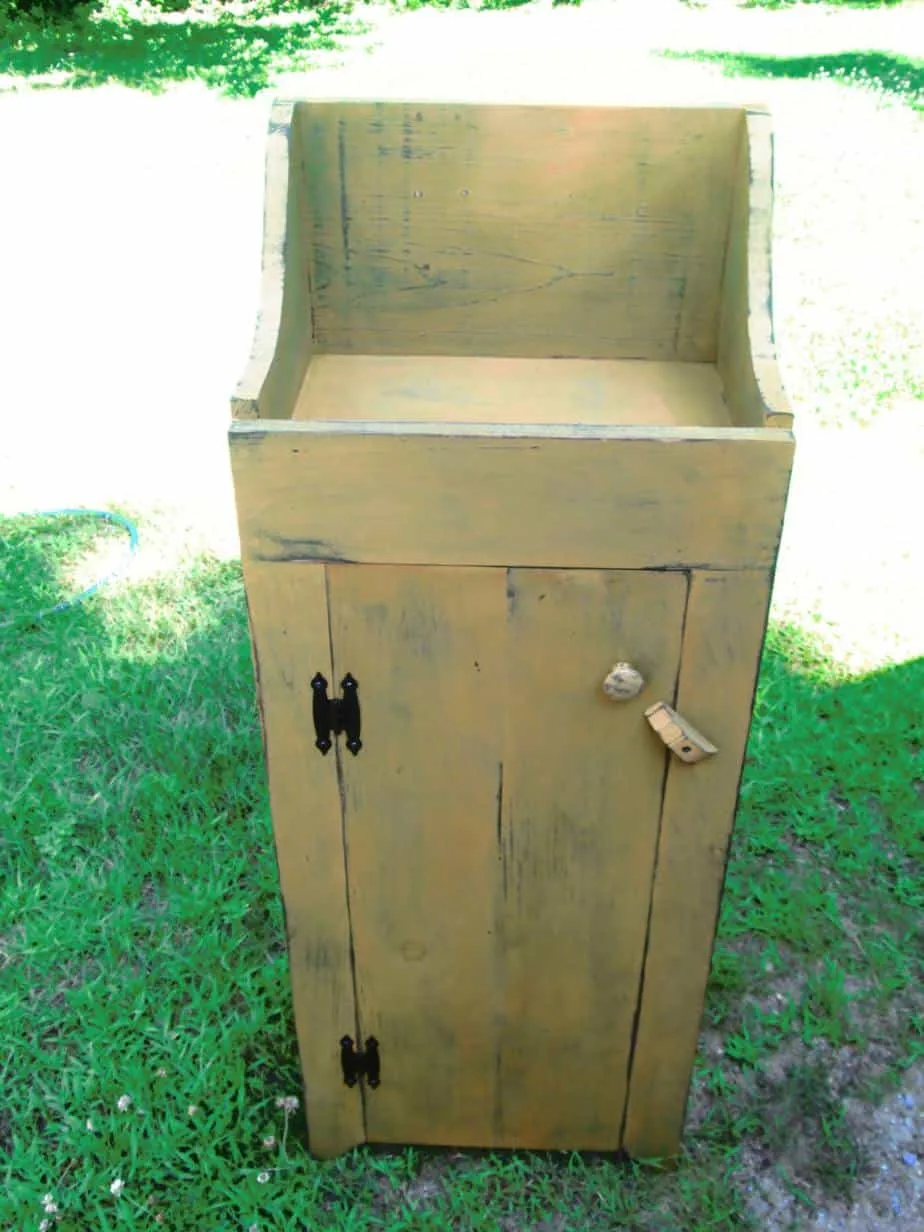- 11 Cool Vintage Things to Collect - December 27, 2021
- 6 Best Antique Telescopes For Décor and Functionality - December 27, 2021
- 10 Best Vintage Bread Boxes for Your Retro Kitchen - December 27, 2021
A dry sink is a piece of furniture that has a basin and a pitcher holder for people to wash their hands or certain items with. It was designed before indoor plumbing and is considered to be a useful way to be more hygienic.
Dry sinks would be placed in various parts of the home but were commonly found in kitchens and bathrooms. Sometimes, they were also placed on porches. This way, someone could wash their hands before stepping inside.
How Does a Dry Sink Work?
The top of the dry sink was carved to hold a basin and pitcher. Its raised lip would keep these pieces in place and prevent them from toppling over. To use it, a person would pour the pitcher into the large basin. They could then wash their hands or another item, like fruits and vegetables. After the water was used, the basin could then be removed and dumped.
To keep the contents in one place, a dry sink would also feature cabinets and drawers. This gave users easy access to towels, soap, and other washing materials.
Dry Sink Designs
Dry sinks often feature the same design, but they went through various phases.
Early dry sinks had a lowered counter. This served as storage space for the basin and pitcher. Because water would often drip into the counter, it was sealed with a special varnish.
In the Victorian era, dry sinks were level rather than dipped. This was done to showcase the countertop which was usually made of marble – a luxury during this time. In fact, any decorative dry sink you find will usually have come from this time because Victorians enjoyed splurging.
Here are a few other specific dry sink designs throughout the years.
Dry Sink Bar
A dry sink bar was a versatile piece that was mainly used for small washing. It contained a cabinet on the counter where necessary items could be easily grabbed. There was also a large storage space beneath it.
High-Back Dry Sink
A high-back dry sink looks similar to a dry sink bar but has a small backing that could serve as a shelf and storage space.
Kitchen Cupboard Dry Sink
This type of dry sink is one of the largest available. It was meant to be kept in the kitchen and featured a tall backing that connected to large cabinets. The dry sink’s lip was a bit deeper but slightly shorter due to a small upper drawer built on top of it.
Painted Dry Sink Cupboard
As its name suggests, this type of dry sink was painted. Its construction is similar to a dry sink bar but instead featured bright colors. This was unlike other models that had a polished wood exterior. Many times, the cupboard would be painted in hues of yellow, white, and blue.
4 Ways to Tell if a Dry Sink is an Antique

Antique Dry Sink Found on Ebay
Dry sinks were very popular and many replicas were made of them. While they all might appear to be similar, only a select few are true antiques. Here are four ways you can identify an authentic dry sink.
Get the best deals on Antique Cabinets & Cupboards Antique 1850-1899 Time Period Manufactured when you shop the largest online selection at eBay.com.
There are Hand-Carved Dovetails
Dovetails are small wooden joints that help connect furniture pieces. Generations ago, machinery wasn’t widely available. Because of this, furniture was made by hand, including the critical joints. If you notice that the dry sink dovetails look irregular or are different sizes you probably have an antique. This indicates that they were chiseled by an artisan.
There are Curved Lines on the Ends
Designing perfect curves was a difficult task for craftsmen. While they had special saws to assist with this, sometimes they would be a bit jagged, especially on the board ends. If a dry sink has slightly curved lines around the bottom, it’s an old model.
The Nails are Square
As with most pieces, nails were made by hand. Due to this, they wouldn’t be hit into a perfect circular shape, but rather a square. You can inspect your dry sink to see if it contains square nails. If it does, the piece was more than likely made by a carpenter and is an antique.
Keep in mind that sometimes the original square nails might have been removed and replaced. Despite this, the dry sink is still considered an antique. It’s important to use other methods as well to identify if the piece is old rather than relying solely on the nail shape. But, this aspect will give you a better understanding of the furniture’s age.
It Has a Vintage Label
You could also examine the dry sink to see if it has a label. This is usually situated on the bottom of the dry sink or beneath it and tells of the manufacturer. It might also have the production date stamped on it.
Most labels will either be a slip of paper glued onto the piece or be wood-burned into it. While not always available, these can be very useful at helping you identify the age of the dry sink.
Can I Still Use Dry Sinks?
You can use dry sinks but they mainly serve as decor pieces now. Some might be in poor condition, so you’ll need to check beforehand to ensure they don’t leak or have rust.
You could also purchase a dry sink and repurpose it. Some things you could turn it into include:
- A nightstand
- A bar
- A flower potting station
- A writing desk
Where to Find Dry Sinks
Dry sinks were widely produced so they are commonly found in antique shops. If you’re looking for a specific model or want more selection, you can look online. Many times, you’ll find a plethora of styles and good deals. However, make sure to research the seller and ask questions before making a purchase. Some might incorrectly identify the piece or try to sell you something different from what is listed.
Dry sinks were an important tool centuries ago. With it, users could easily wash items. While they were no longer needed after indoor plumbing was invented, they still serve as an important look into the past.
The Primitive Pine Dry Sink Got A New Look In An Old Way! Check out Etsy's antique dry sink selection for the very best in unique or custom, handmade pieces from their buffets & china cabinets shops.



